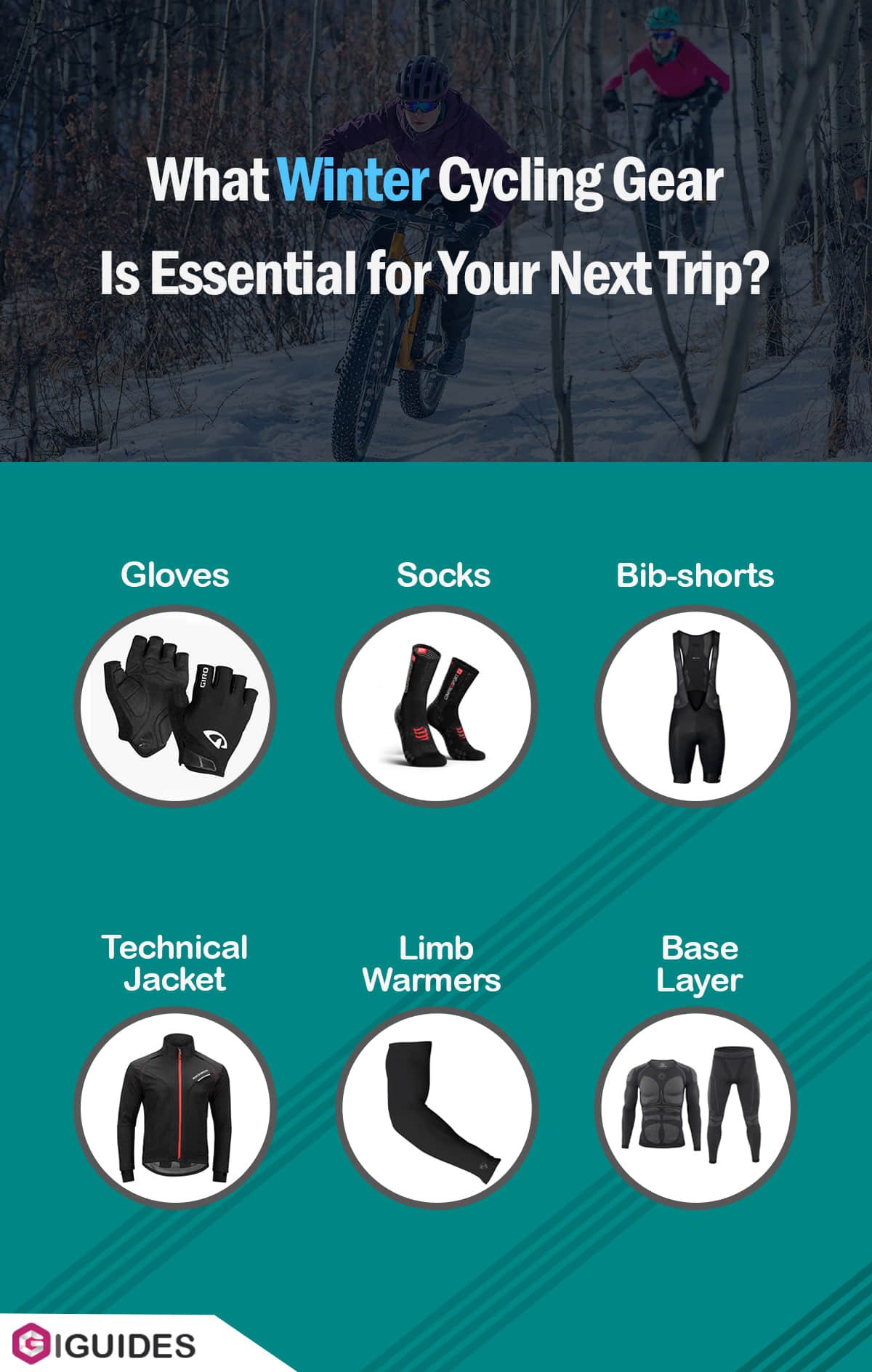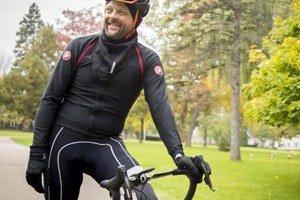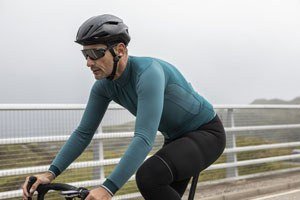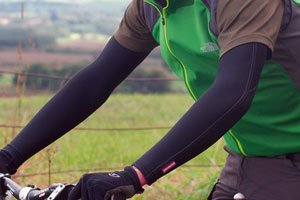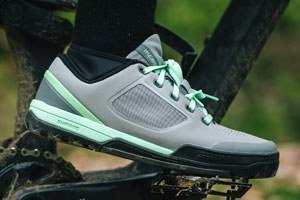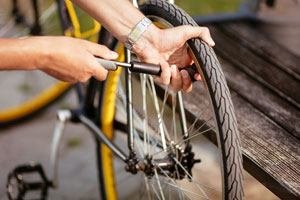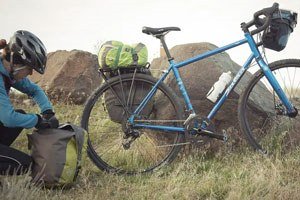According to the adage, winter miles equivalent summer smiles. However, if you are not adequately equipped, logging valuable miles during the winter seasons can be challenging. Although for those who have cycled in the cooler months many times earlier, cycling also in winter can seem scary. Cycling in the winter can be fantastic but at same time it can be very challenging without winter cycling gear.
Cycling regularly round the year keeps you healthy and agile, but doing so in the cold with perfect winter cycling gear is just awesome.
A cycling trip with your friends in the cold weather seems to cause shiver, but if done with proper winter cycling clothing, it may prove really marvellous. You have the option to visit a number of sites online to buy the riding gear you will need to winter-proof yourself on the cold road.
Enjoy Your Frosty Cycling Trip, But Be Packed with Your Cycling Kit First.
Following is the rundown of the essentials required to overcome cold and secure some wonderful winter miles in your bag.
1. Dress to Keep Cycling in Cold Weather
Clothing is, of obviously, the most noticeable and perhaps significant aspect in winter season riding. On rides, the correct windproof, thermal, and waterproof gear can keep you dry and warm to the point where you don’t even realize how cold it is.
A full set of winter cycling gear may appear to be an expensive investment at first, but smart selection and layering may provide you with a variety of options to suit a variety of temperatures.
NUMEROUS THIN LAYERS WORK WELL THAN ONE THICK LAYER: PLAY WITH THEM!
Instead of being constrained by the elements, you may simply react to the situation by adding or removing layers as required. The “base layer” (against your skin) keeps you warm, while the “upper layer” or shell keeps you safe from the wind as well as rain.
a) Thermal Base Layer
Whether it is summer or winter, wicking away sweat from your skin is important. Soaked skin under a wet base layer in direct contact with cold air can cause you more chilled than being underdressed. Moreover, it will become almost impossible to warm up again if you once get wet through.
Hence, it is very much essential to rely on some natural material like merino wool, etc. with high wicking and heat balancing properties. Not only does wool ward moisture away from your body but also helps reduce the stink level dramatically.
b) Thermal Jersey
A thermal jersey of a fine quality keeps you well insulated in cold but dry weather. Long-sleeved thermal jerseys with warm fleece linings give your body extra skin coverage. More often, high-quality thermal jerseys include a built-in windproof membrane not only to keep wind chill at a stone’s throw but also to wick away sweat. A thermal jersey with a good base layer inside alone can do for you. But, if you feel more chilled, use some lightweight jersey as a perfect middle layer.
c) Technical Jacket
Always a vital inclusion to your riding arsenal is a technical jacket. Your windproof outer layer makes you feel less chilled even though the temperature has dipped to -5 C*. In case you get stick in some heavy shower during the winter months, your technical jacket will keep you water-proof with its heavier soft-shell or hard-shell and wind and waterproofing abilities. In addition, these technical jackets also remain breathable.
2. Socks and Gloves
Your hands and feet are the extremities of your body which immediately go numb the soonest you get exposed to acute cold. This is because your CNS(central nervous system) drives the blood to the cores of your body just on its exposure to the chilly weather.
It may become very difficult for you to have good control over the bicycle with cold hands and feet. So, wearing warm gloves and comfortable socks will be very wise and safe. These gloves and socks must be insulated with waterproof outer layers, fleece linings, windproof membranes and thermal fillings.
3. Thermal Bib-shorts or Tights
Other perfect partners for a thermal jersey are thermal bib-shorts and tights which keep your legs insulated under the coldest conditions. Courtesy to a lot of wonderful features, both bibs and shorts offer much greater support to your lower limbs. Winter shorts maybe a little longer than the summer ones.
Furthermore, feeling not interested in total coverage of your legs, you may also use Flandrian-style three-quarter bib shorts. More insulation and comfort have been added to the tights and bib-shorts through fleece linings and excellent water and wind-resistant fabrics.
4. Hats for Covering Your Ears
In the winter, wearing a warm cap under your helmet is indeed a game-changer. Special blood arteries manage cooling and warmth in our ears, noses, cheeks, hands, as well as feet.
A windproof, insulating skull cap (or “Belgian cap”) that draws down around your ears is a winter riding must-have that will improve your overall riding satisfaction. It’s fine to keep your ears warm and wrapped.
5. Limb Warmers
Upper and lower limb warmers pair very well with the bib-shorts whenever you need a little extra flexibility. These may cover your thighs down to either just below the knees or the full legs. Moreover, limb warmers often boast fleece linings and windproof outer fabric or water repellent materials to keep cold air at bay.
Arm warmers go very well with a short-sleeve jersey, for they offer more flexibility. As compared to the other winter riding outfits, limb warmers not only prove cost-effective but are also handy over for the milder spring season.
6.Head Accessories
Added warmth may guarantee through the addition of some head accessories to your winter cycling gear. These may include skull caps, headbands, neck gaiters, etc. In the form of thin thermal layers fit under a helmet like a regular cycling cap, the head accessories may confer superb insulation to your head.
Likewise, a neck gaiter may exclude the cold draughts, potentially covering your chin and mouth. Moreover, the heat may seal within your jacket, as the gaiters act more like a cork as well.
Related Article: Essentials for a Motorcycle Road Trip
Toe warmers are a good option for the cold mornings not asking for the shoe covers. Besides, thermal socks help your shoe covers a lot towards insulating your shoes.
7. Shoes
Having your toes warm is almost as difficult, if not more so, than keeping your fingers warm because you can’t move your toes while riding. Shoe covers are simple to put on and provide excellent protection from the rain and cold. In dry and chilly weather, insulating shoes are also an excellent choice.
Riding a bike with cold and damp toes may turn one of life’s greatest pleasures into a dreary chore. So let’s give a big shout-out to the modest overshoe, which can prevent the worst of the winter weather at bay. These 3.5mm thick neoprene overshoes are reasonably priced. Its surface is non-permeable and easily keeps your feet toasty in even the coldest of conditions
Read More: The Essentials for a Beginner’s Hunting Gear Checklist
8. Lights
We’re seeing an increasing number of riders utilizing lights in the sunshine all year to draw attention to themselves and other road consumers. This is perhaps even more crucial in the winter because it can be very dreary on cloudy winter days whenever the sun is even at its weakest.
Smaller, light and vibrant rechargeable LED lights are widely available and don’t cost a fortune. Having lights on you every time eliminates the fear of being caught in the dark on shorter days. Before each ride, check to see if your lights are charged (or if you need new batteries).
9. Tires
For a variety of reasons, including a lack of grip as well as the chance of slicing up costly rubber, teetering along damp, mucky roads on your 23 mm race rubber is not a good idea. We’d go with a tire that has some puncture resistance and are more durable.
The Continental Gator skins are a strong absolute favorite for winter riding, although similar types are available from a variety of tire manufacturers. They don’t prevent all punctures, although they do assist. Tubeless and solid tires are also available, although they are currently more costly and more difficult to install than standard tires with tubes.
10. Be Prepared
For the ride you’re going on, you could have certain criteria. Make sure you arrange a route that corresponds to the weather prediction, have a (charged) phone, some cash in case of an emergency, and follow the instructions stated above
Conclusion
Finally, you know all you need to know about getting properly equipped for winter cycling and enjoying your favorite trails or roads, especially during the cold weather. If managed intelligently and timely, the winter cycling gear can serve you remarkably well on your next road trip.
